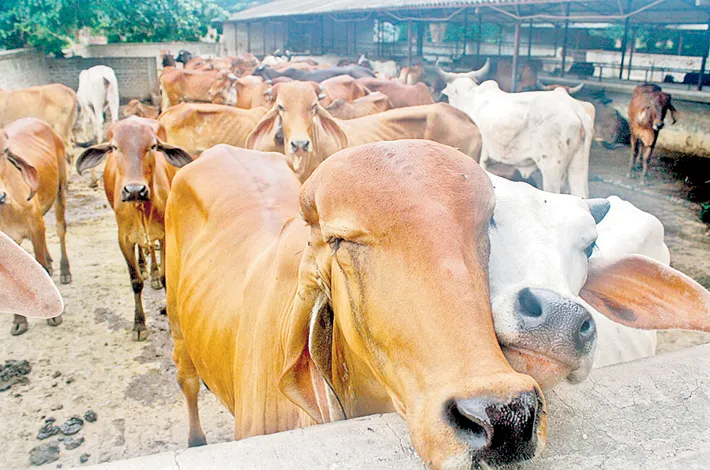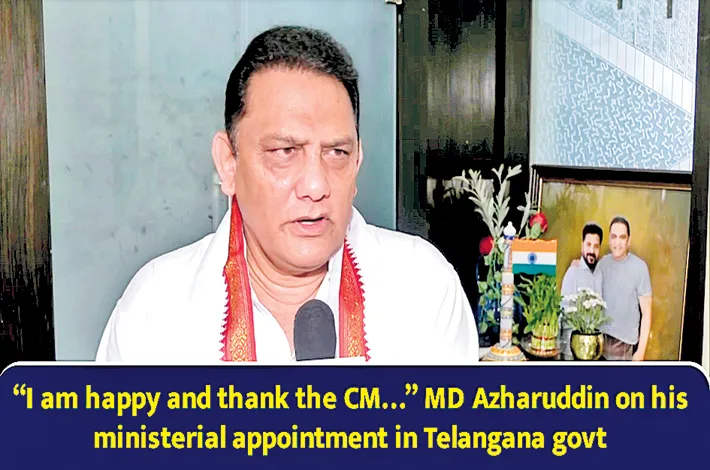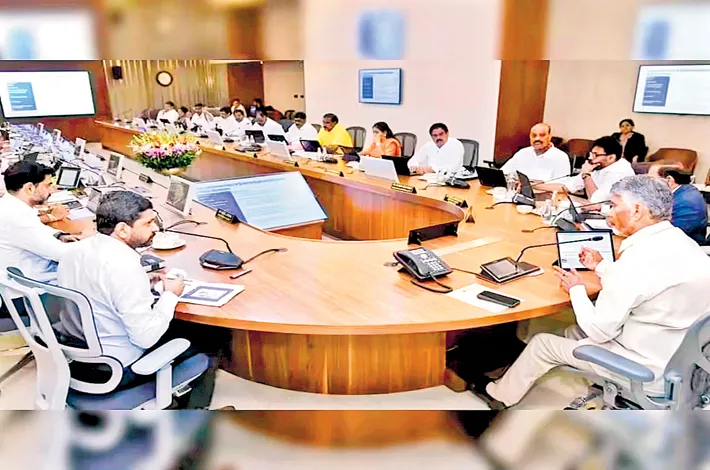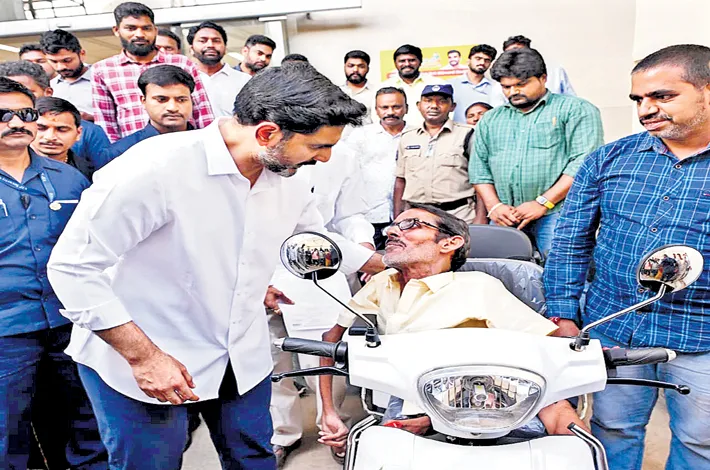Telangana’s goshalas, a far cry
12-11-2025 12:00:00 AM

■ Telangana has 3.26 crore cattle but lacks adequate shelters.
■ 21 government goshalas planned; none fully operational yet.
■ Enkepalle’s Rs 157 crore mega goshala stuck at tender stage.
■ NGOs running shelters report no government support.
■ Poor infrastructure and overcrowding causing cow deaths.
metro india news I hyderabad
Despite being deeply rooted in India’s cultural and spiritual fabric, cow protection continues to face severe neglect in Telangana. Cattle, once considered pillars of the agrarian ecosystem and environmental balance, are increasingly left without proper care or shelter. According to official data, the state has nearly 3.26 crore cattle — almost equal to its human population — but many cows continue to die due to poor maintenance, lack of facilities, and administrative apathy.
Although the Telangana government had announced plans to establish modern goshalas (cow shelters) across all districts, the implementation remains slow and scattered. Several projects are stuck due to delays in land acquisition, poor inter-departmental coordination, and insufficient budget allocations. Officials admit that even where land has been identified, the construction work is yet to begin, leaving thousands of stray cows wandering on roads and highways, vulnerable to accidents and starvation.
Under the Animal Husbandry Department, funds were earmarked for goshalas, but the release of these funds has been delayed, halting progress in multiple districts including Hyderabad, Medchal, Warangal, Nizamabad, and Nalgonda. While a few NGOs continue to operate shelters with their own limited resources, they complain of receiving little to no support from the government — not even for basic feed or veterinary aid.
Government promises have largely remained on paper. Telangana had planned to set up at least one government-run goshala in every district, assigning key responsibilities to departments like Endowments, Revenue, and Agriculture. A special committee comprising senior officials — Chief Secretary of Animal Husbandry Sabyasachi Ghosh, Endowments Secretary Shailaja Ramaiyer, and Agriculture Secretary Raghunandan — was formed to draft guidelines. However, at the ground level, progress remains negligible.
In regions like Vemulawada, Yadagirigutta, and Enkepalle, large-scale goshalas were proposed with land parcels between 50 to 100 acres, but approvals have stalled. At Vemulawada, cows once donated as religious offerings were being mishandled, leading to public outrage. The temple management has since appointed six veterinary doctors and 40 supporting staff to improve conditions, but distribution of temple cattle to farmers remains irregular.
One of Telangana’s most ambitious projects — a Rs 157 crore mega goshala at Enkepalle in Ranga Reddy district — has also failed to take off beyond the tender stage. Spread across 98 acres, this was envisioned as the state’s largest modern shelter for stray cattle, managed by the Hyderabad Metropolitan Development Authority (HMDA). Despite government clearances and fencing work, the project has not moved to the construction phase.
The state has identified 21 sites for advanced goshalas, each estimated to cost Rs 50 crore. These would include biogas units and organic manure production facilities using cow dung and urine. Locations include Ranga Reddy, Jogulamba Gadwal, Nalgonda, Kamareddy, Bhadradri Kothagudem, Sangareddy, and Mulugu districts, among others. Yet, most remain at the proposal stage.
According to official figures, Telangana currently has around 306 goshalas, including several in urban areas — even though both the Central Pollution Control Board (CPCB) and the Animal Welfare Board discourage shelters within city limits. Experts point out that overcrowding, lack of ventilation, and shortage of fodder are leading to high cattle mortality. Ideally, each cow needs at least three square meters of shelter space and seven square meters of open ground, along with 30–40 kg of fodder per day. However, in many urban goshalas, cows receive barely 5–10 kg of fodder, resulting in malnutrition and disease.
The situation has also created civic issues. Cow dung and waste are reportedly choking drainage systems in parts of Hyderabad where goshalas operate in congested localities. Authorities are now considering restricting future goshalas within city limits due to hygiene and safety concerns.
Animal welfare activists argue that the government’s lack of sustained attention and delayed funding have pushed the state’s cow protection agenda into limbo. Despite multiple policy announcements and symbolic references during elections, ground reality reflects continued neglect.
Rajasthan sets the example
Rajasthan manages a 2,000-acre goshala that shelters 1.5 lakh cows — a model of efficient care and devotion. Telangana, however, has failed to replicate such initiatives. Last year, 1,279 cows from the Vemulawada temple were distributed to farmers, but the process was abruptly stopped without explanation.
The Nandini Goshala, established in June 2020, was intended as a sanctuary for sacred cows and a symbol of cultural preservation. Initially equipped with 10 sheds, three more were added after last year’s deaths. Each shed now accommodates 50 to 60 cows. Still, the shelter suffers from poor maintenance, lack of veterinary supervision, and insufficient fodder.
The Devasthanam Department, which manages 69 temple goshalas across Telangana, has failed to act decisively. Despite identifying an additional 50 acres at Marripally and another 20 acres for expansion, the government has neither released funds nor begun construction. Critics accuse officials of shifting blame to devotees — claiming they donate sick or aged cows — instead of addressing core issues like staff shortage and negligence.
The Nandini Goshala, once envisioned as a sacred welfare center, is now viewed as a revenue-driven institution. Devotees say bureaucratic delays and administrative apathy have turned this spiritual haven into a stark example of systemic neglect.








